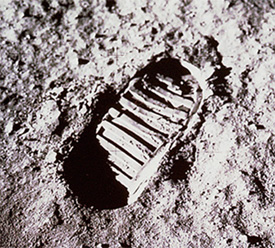First-Hand:Manufacturer of Silicon Transistors useful in Apollo

Submitted by Edward N. Clarke, PhD, and Professor Emeritus
I have been an IEEE Life Member for many years, and am currently 93 years of age.
I am one of the founders of the US semiconductor industry, first at Sylvania Electric Company (1950-1956), then at Sperry Semiconductor Division (1956-1959), and finally at National Semiconductor Corp. of which I was co-founder in 1959.
I was the principal technologist at National Semiconductor for the first five years, and was the Vice President for Operations (silicon transistor development and manufacturing) and a member of the Board of Directors.
Starting in early 1960, we at National manufactured silicon transistors for the US Air Force Minuteman I ICBM and its inertial guidance system and its telemetering system. We manufactured those devices for the first and successful test flight from Cape Canaveral. And, we manufactured the silicon transistors for one or more of the first active ten missiles based in Montana during the Cold War.
We also manufactured silicon transistors for the F-104 NATO fighter plane navigational unit used by all of the NATO countries during the Cold War. The airplane was the US Starfighter. Also, silicon transistors for small floating buoys used to detect the movement of Russian submarines in Russian harbors were manufactured. There were many other customers for National transistors.
It was natural for National Semiconductor to also manufacturer silicon transistors for use in the entire Apollo program, including the Apollo vehicle to the Moon.
By the time of the Moon landing, I had already been offered the position of Associate Dean of the Faculty and Director of Research and working at Worcester Polytechnic Institute in Worcester, Massachusetts, one of the earliest engineering colleges in the US.
Many of the early founders of the US semiconductor industry went to work in colleges and universities to help in education as a final step in their (and my) professional lives. Following my retirement from WPI in 1995, I was invited by the Brown University Engineering School to lecture at Brown on the semiconductor industry; likewise at WPI; likewise at Nichols College, all during many following years.
I hold university degrees from both Brown University and Harvard University. I served in the US Navy during WW 2.
It does appear to me that I played some early role in helping to make the Apollo program a success; minor but perhaps important.
Back to Human Space Travel Primary Sources